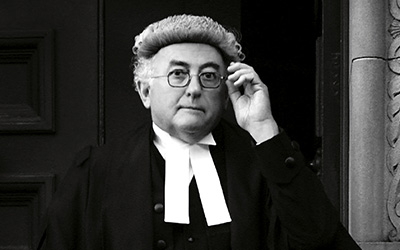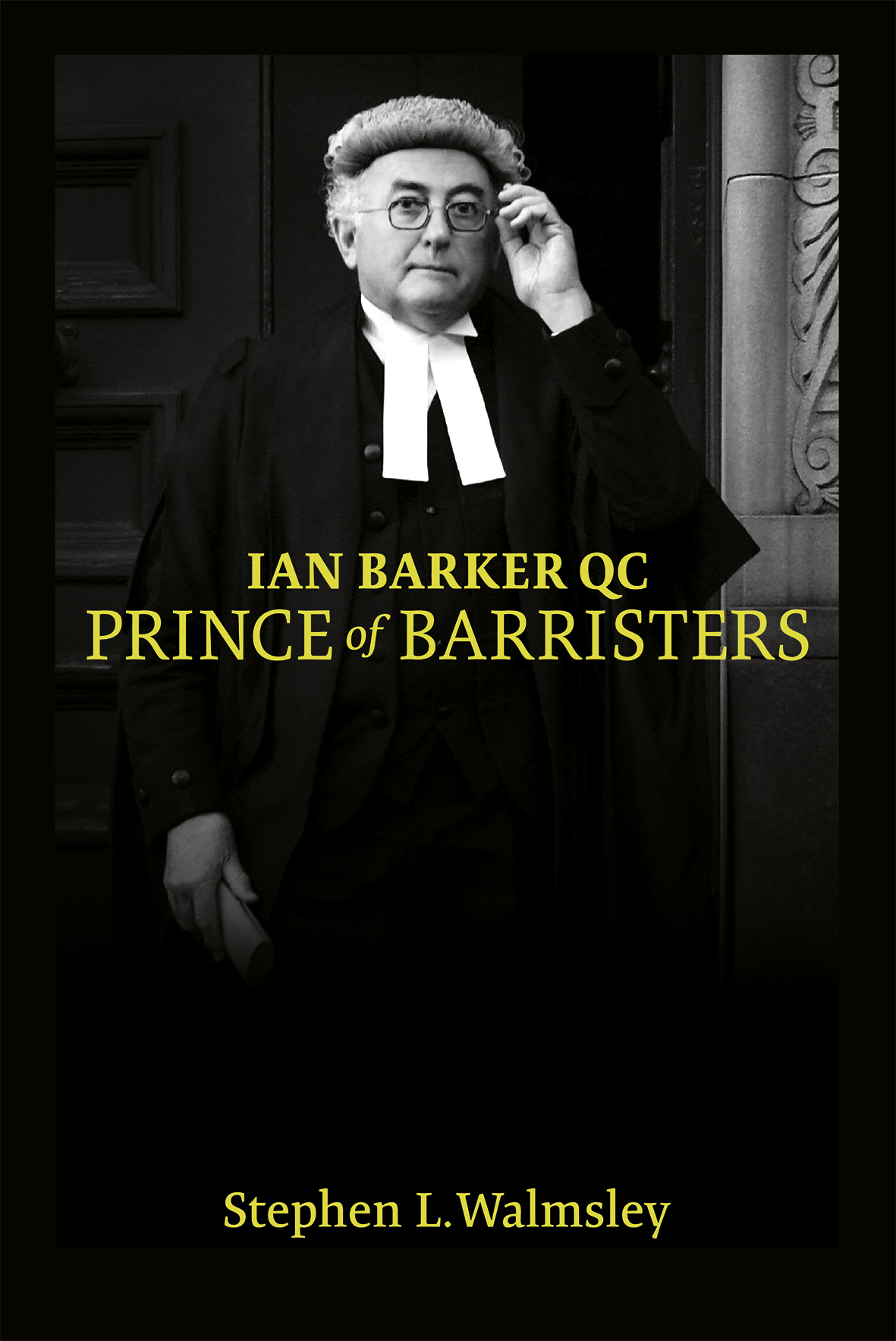
- Free Article: No
- Contents Category: Memoir
- Review Article: Yes
- Article Title: Unarmed combat
- Article Subtitle: A life in litigation
- Online Only: No
- Custom Highlight Text:
Ian Barker was a relative rarity among barristers in that he never used two words when one would suffice. He died in 2021 and is now the subject of a biography by Stephen Walmsley, himself a barrister and then a judge – since retired – of the NSW District Court. This is an unusual exercise in Australia, where judicial biography is a sparse species and the lives of other lawyers are seldom chronicled.
- Featured Image (400px * 250px):

- Alt Tag (Featured Image): Michael Sexton reviews ‘Ian Barker QC: Prince of barristers’ by Stephen L. Walmsley
- Book 1 Title: Ian Barker QC
- Book 1 Subtitle: Prince of barristers
- Book 1 Biblio: Australian Scholarly Publishing, $59.99 pb, 394 pp
- Book 1 Cover Small (400 x 600):

- Book 1 Cover (800 x 1200):

- Book 1 Readings Link: https://www.readings.com.au/product/9781923267145/ian-barker-qc--stephen-l-walmsley--2024--9781923267145#rac:jokjjzr6ly9m
Four years later, Barker became the Territory’s first Solicitor General and was heavily involved in the negotiations with the Commonwealth that preceded the commencement of self-government for the Territory on 1 July 1978. In 1981, he took up residence in Sydney and started practice at the NSW Bar, but he returned to the Territory in 1982 to prosecute in the trial of Lindy Chamberlain. Chamberlain was, of course, convicted of murdering her infant child but, following a judicial inquiry, where Barker appeared for the Crown, she was later pardoned and acquitted, with compensation of $1.3 million to herself and her husband. The author makes no criticism of Barker’s role in all this and seems to accept that there was forensic evidence – later discredited – on which the prosecution was entitled to proceed at the trial. The case illustrates the difficulty that may face a prosecutor who has to rely on expert evidence in circumstances where that evidence may be the subject of scientific challenge many years later.
The author is skilled at presenting complex legal cases in a way that makes them readily comprehensible to the general reader, which is no easy task. A good example is the account of the 1983 Royal Commission into the expulsion of Soviet diplomat Valery Ivanov and the blackballing as a lobbyist by the Hawke government of former ALP National Secretary David Combe on the basis of his dealings with Ivanov. Barker acted for Combe, who was found to have engaged in no wrongdoing by the Commission but whose career and business had been effectively destroyed. In the course of the Commission, Barker had to cross-examine Prime Minister Bob Hawke. He was not the first person to find the witness’s aggression rather confronting. One of the other barristers appearing for the Commission remarked: ‘This is about the only occasion I can recall of a really competent cross-examiner being demolished from the witness box.’
With the exception of his prosecution in the Chamberlain case, Barker had essentially been a defence lawyer, and his practice at the NSW Bar often involved appearing for individuals facing serious criminal charges. Many of these were obvious underworld characters, but this is inevitable for members of the criminal Bar with a practice on the defence side. One of Barker’s clients not in this category was High Court Judge Lionel Murphy, who was charged with attempting to influence another judicial officer in his conduct of a case. Murphy was ultimately acquitted, but, like Combe, his reputation never really recovered and he died not long afterwards.
On the civil side of his practice, Barker appeared in two of the longest-running cases heard in the NSW Supreme Court – a dispute over a will by members of the Waterhouse racing dynasty lasting 153 hearing days and lawyer John Marsden’s defamation case against Channel 7 over allegations of under-aged sex, which lasted 229 hearing days. Again, these complicated pieces of litigation are clearly explained and analysed by the author. The fees from these sagas no doubt contributed to the purchase price of a villa in Tuscany where Barker and his family spent quite a bit of time after 1990.
In 1999, Barker was elected as president of the NSW Bar, a somewhat unusual selection for this role, given his generally unpretentious and down-to-earth character. He remained, however, the first choice for the defence in the case of public figures facing criminal charges, including former judges Jeffrey Shaw and Marcus Einfeld.
In the aftermath of 11 September 2001, Barker became very critical of the counter-terrorism policies of both the Australian and US administrations. In 2005, he acted for Mamdouh Habib, a citizen of both Australia and Egypt, who had been held for a period at Guantanamo Bay before being released to return to Australia. On his return, Habib brought proceedings against the Commonwealth government and a number of its officials for complicity in kidnap, false imprisonment, and torture. After years of preliminary arguments in the Federal Court, the Commonwealth settled the proceedings with Habib in 2011.
This is a book that has an obvious interest for lawyers. It is also valuable reading for nonlawyers, not only because it decodes the legal cases it describes but because it underlines the risks and vagaries of litigation, a form of unarmed combat that a sensible person would do almost anything to avoid.


Comments powered by CComment